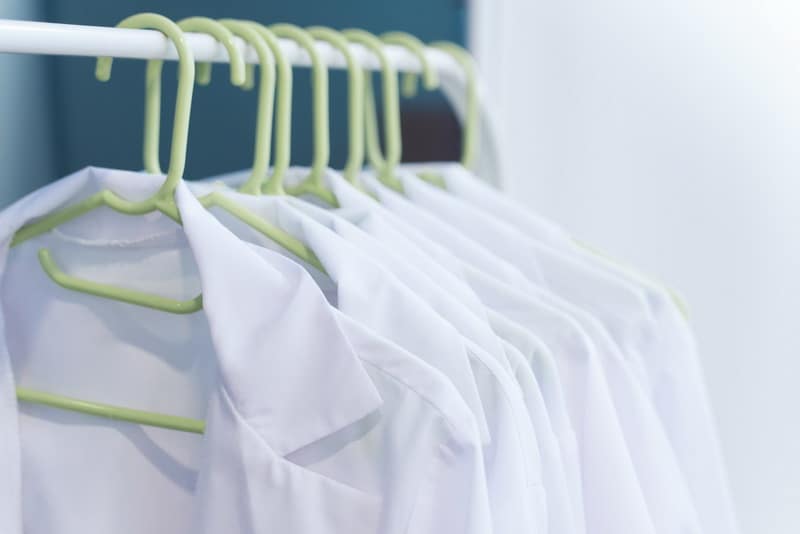
A previous blog post on our website discussed the traditional doctor’s lab coat and its potential to make patients sick by spreading bacteria. That post discussed a variety of possible solutions, including insisting on hygienically clean uniforms and redesigning said uniforms with short sleeves. This post proposes that doctors go above and beyond adjusting the lab coat to protect patients.
Unfortunately, despite advancements in Western medicine, we have not been able to stop certain kinds of bacteria and viruses we now know as “superbugs.” These bugs develop resistance to antibiotics, making them dangerous even to healthy people.
If you want to learn about some of the horrors caused by the superbugs, run an internet search. You’ll find story after story of patients contracting superbugs during routine hospital stays, after surgeries, or while on vacation in a foreign environment. Most of the victims survive, but many do not.
Disinfecting the Hospital
Little can be done to prevent superbug infection in a natural setting, such as the ocean, so our efforts to wipe out known superbugs tend to concentrate on hospitals. This focus is reasonable, given that hospitals are the perfect environment for spreading germs.
In light of that knowledge, hospitals are now starting to realize that they face a big problem. According to Molly Olmstead’s Slate article, “How Do Hospitals Stop the Spread of Drug-Resistant Superbugs Like C. Auris?,” the push is on to sterilize every square inch of the hospital with powerful disinfectants. And where those disinfectants don’t work, bleach almost always does the job.
As a provider of hospital linens, we at Alsco have to do our part by making sure that none of the products we bring into a local hospital has any chance of being contaminated. That responsibility motivated us to get involved in establishing industry standards for hygienically clean linens.
Our hospital linens and uniforms are not just visibly clean; they are certified hygienically clean as well. Our linens and uniforms do not carry germs into the hospital.
Backing Off on Antibiotics
Hygienically clean linens and disinfected hospitals can help Western medicine make huge inroads in combating superbugs. But these sorts of solutions are only effective externally. What do you do once a patient actually contracts a terrifying superbug? You might find that no known antibiotic can eliminate it.
Unfortunately, antibiotics have long been overprescribed for both humans and cattle. For decades, doctors wrote antibiotic prescriptions to treat viral infections, knowing that the medications would do no good. They also believed that they would do no harm. But now we are discovering that the overuse of antibiotics has done great harm.
Western medicine is finally getting serious about reducing reliance on existing antibiotics, even as new ones are being developed. In the meantime, we have to look at other ways to deal with superbugs.
A fascinating article published by the Daily Beast, Steffanie Strathdee’s “My Husband Became a Poster Child of the Post-Antibiotic Era,” discusses phage therapy, which involves the use of bacteriophages – viruses that attack and destroy bacteria – to combat bacterial illnesses. The therapy is 100 years old and was successfully used to treat a Paris dysentery outbreak in 1919. But this therapy fell into widespread disuse with the introduction of antibiotics. Perhaps it is time to resurrect bacteriophages.
Lab coats and other clinician clothing can certainly spread germs in a hospital setting. But if we genuinely want to protect patients against superbugs, our efforts have to go beyond focusing on the clothing doctors and nurses wear. Contact us at Alsco to learn more about protecting your patients.
